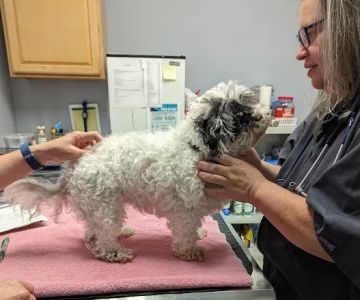The Importance of Regular Nail Trimming for Your Pet's Health
As a pet owner, we often get caught up in our furry friends’ daily needs: food, exercise, and love. But one essential aspect of pet care that frequently goes unnoticed is nail trimming. While it may seem like a simple grooming task, regular nail trimming plays a crucial role in ensuring our pets’ overall health and comfort. Let me take you through the importance of this routine, the problems that can arise from neglecting it, and how it contributes to a healthier and happier pet.
Why is Nail Trimming So Important for Pets?
Imagine if you had to walk around with long, overgrown fingernails. It would be uncomfortable, right? The same is true for our pets. Regular nail trimming ensures that their paws are properly supported and comfortable. But there’s more to it than just comfort; trimming your pet's nails is a key part of overall health maintenance. Here's why:
- Prevents Painful Injuries: Overgrown nails can cause serious issues. If your pet's nails grow too long, they can start to curl, leading to painful ingrown nails. This not only makes it difficult for your pet to walk but can also cause infections if left untreated.
- Improves Mobility: Long nails change the way your pet walks. Cats and dogs naturally walk in a way that puts minimal pressure on their nails. But when nails get too long, it can affect their posture, leading to potential joint or muscle problems over time.
- Prevents Scratches and Damage to Your Home: While this might seem like a small concern, overgrown nails can cause scratches and damage to furniture, walls, and floors. Not to mention, it can also result in your pet accidentally injuring themselves or others when they jump or play.
- Maintains Paw Health: Regular nail trimming also keeps your pet’s paws clean. Long nails can collect dirt and debris, which increases the risk of infections. Moreover, it helps in preventing the nail from breaking or splitting, which can be painful for your pet.
The Risks of Neglecting Nail Trimming
Neglecting to trim your pet’s nails may seem like an inconvenience, but the long-term consequences are far more severe than just an aesthetic issue. I once met a dog named Max, a Golden Retriever, whose owner had ignored his nail care for months. Max started limping, and his nails had become so long that they were curling backward into his paw pads. After a vet visit, it became clear that the problem had escalated to a serious infection. It took Max several weeks to recover, and his owner felt guilty for not keeping up with a simple task that could have prevented the whole ordeal.
Max’s story is not unique, and it highlights a common issue that pet owners face: failing to regularly trim their pets’ nails. Overgrown nails can lead to:
- Paw Pad Injuries: When nails grow too long, they can put pressure on the paw pads, causing painful sores or abrasions. In extreme cases, the nails can puncture the paw pads.
- Postural Issues: Long nails can alter the way your pet walks, leading to improper alignment and potential joint stress. This can cause discomfort and may lead to long-term problems such as arthritis.
- Infections: If nails are left unchecked, they may become cracked or split, which can open the door to bacteria and fungi. Infections can be painful and may require costly veterinary treatment.
How to Trim Your Pet’s Nails Safely
Trimming your pet’s nails doesn’t have to be a difficult task. With the right tools and a bit of patience, you can keep your pet’s nails in tip-top shape. However, there are a few important guidelines to keep in mind:
- Use the Right Tools: Invest in high-quality pet nail clippers or grinders that are specifically designed for pets. Using human nail clippers or other inappropriate tools can cause discomfort or even injury.
- Know Where the Quick Is: The quick is the blood vessel inside the nail, and it is essential to avoid cutting it. For lighter-colored nails, it’s easy to spot the quick. For dark nails, trim little by little to avoid cutting it accidentally.
- Take Your Time: Many pets get anxious during nail trimming, so be patient and calm. Try to create a comfortable environment for your pet by offering treats and praise during and after the process. If your pet is particularly nervous, you may want to take them to a professional groomer or veterinarian for help.
- Trim Regularly: It’s essential to trim your pet’s nails regularly to avoid the issues mentioned earlier. Generally, pets should have their nails trimmed every 3-4 weeks, though some pets may need more frequent trims, depending on their activity level.
When to Seek Professional Help
While regular nail trimming can usually be done at home, there are instances when it’s best to seek professional help. For example, if your pet’s nails are too thick or overgrown, or if your pet is extremely fearful of nail trimming, a professional groomer or veterinarian can ensure the task is done safely.
It’s also essential to visit a veterinarian if you notice any signs of infection, pain, or discomfort related to your pet’s nails. These issues should not be ignored and require prompt attention to avoid further complications.
Conclusion: Nail Care Equals Overall Health
In the end, regular nail trimming is an integral part of keeping your pet healthy and comfortable. It’s easy to overlook this task, but by making nail trimming a regular part of your pet care routine, you can prevent painful conditions and ensure that your pet is happy and mobile. So, grab those nail clippers, and give your pet’s paws the attention they deserve!











